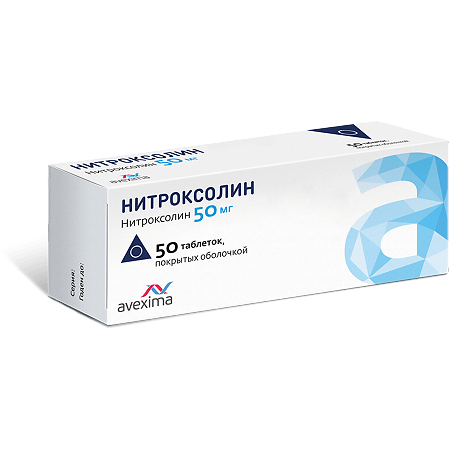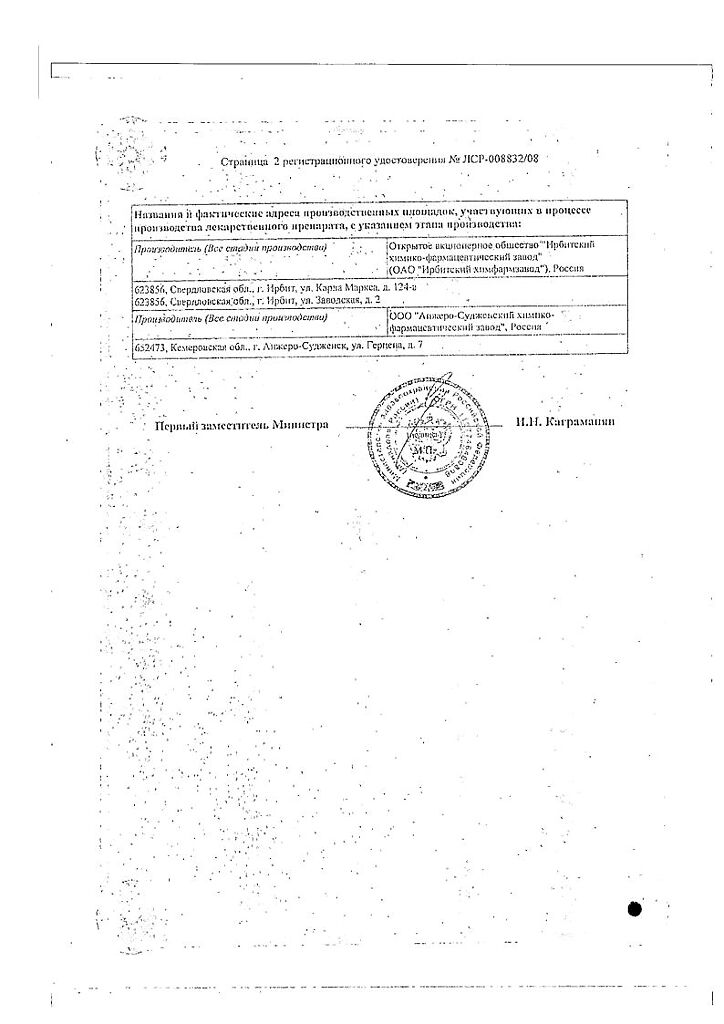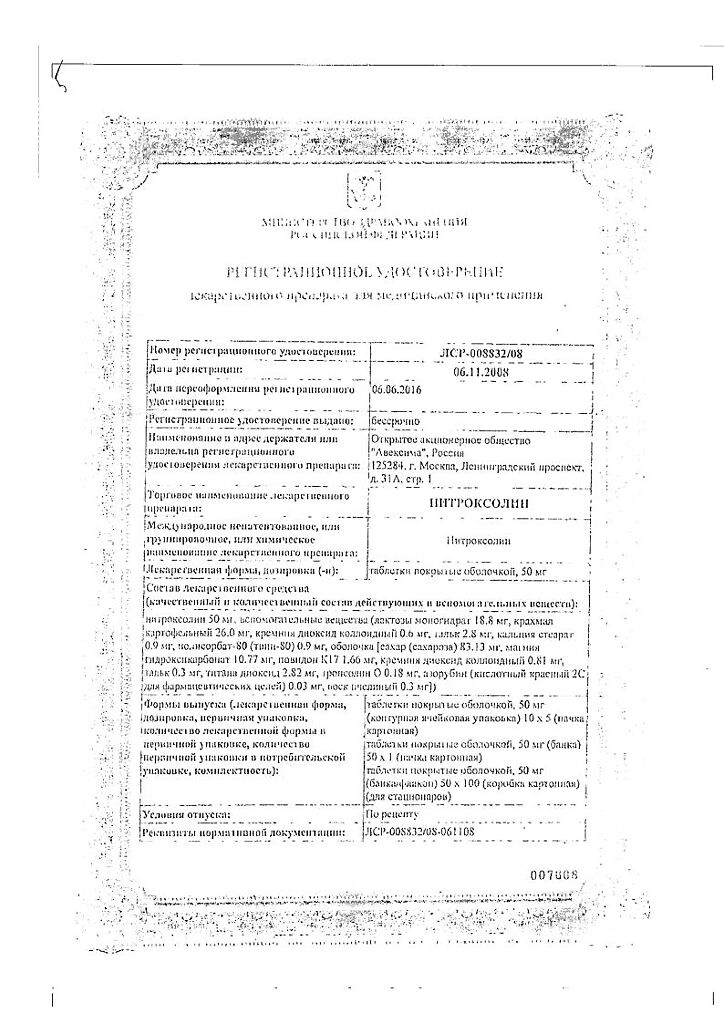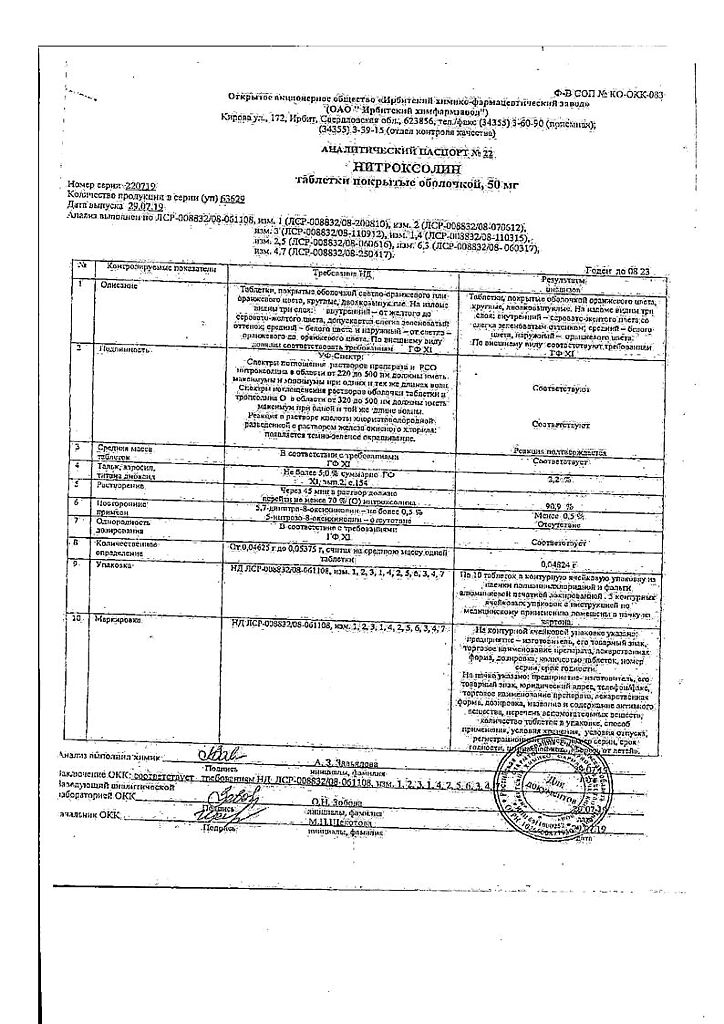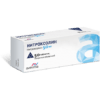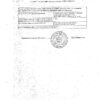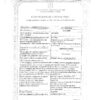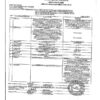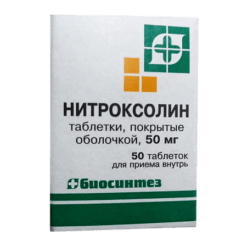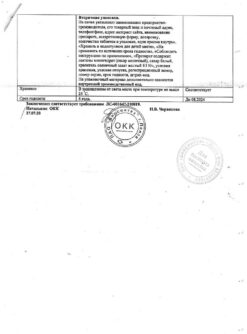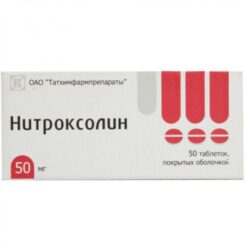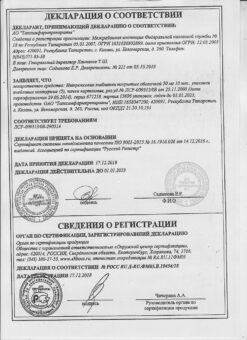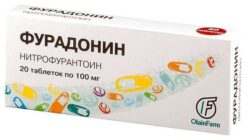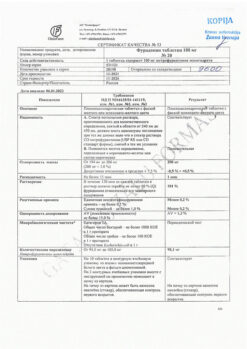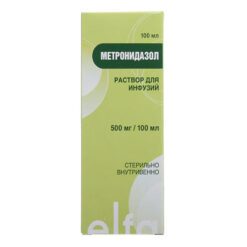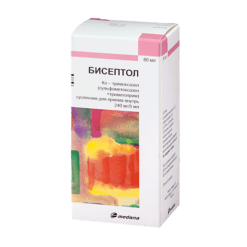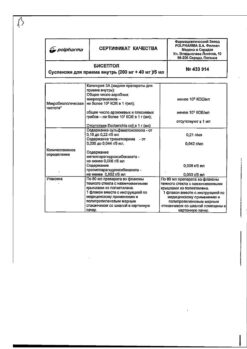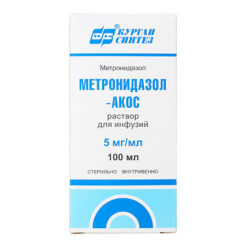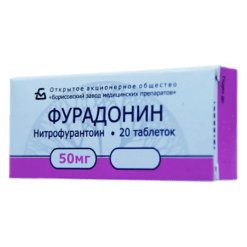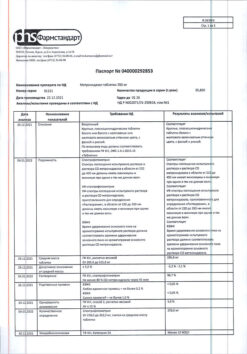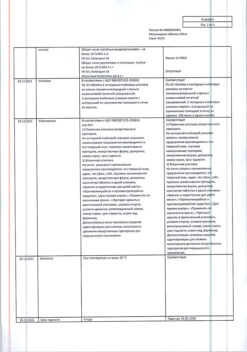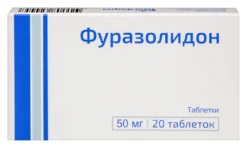No products in the cart.
Nitroxoline, 50 mg 50 pcs.
€9.34 €8.17
Description
Nitroxoline is a broad-spectrum antimicrobial and antiprotozoal drug for the treatment of urinary tract infections.
Nitroxoline selectively inhibits the synthesis of bacterial DNA, forms complexes with metal-containing enzymes of the microbial cell and acts both on Gram-positive microorganisms: Staphylococcus spp. (including S.aureus), Streptococcus spp. (including beta-haemolytic streptococci, Streptococcus pneumoniae, Enterococcus faecalis), Corynebacterium spp, Bacillus subtilis; and on Gram-negative microorganisms: N.gonorrhoeae, E.coli, Proteus spp., Klebsiella spp., Salmonella spp., Shigella spp., Enterobacter spp.
Nitroxoline is also active against Mycobacterium tuberculosis, Trichomonas vaginalis, some types of fungi (Candida spp., dermatophytes, molds, some deep mycosis agents).
Pharmacokinetics
Nitroxoline is well absorbed from the digestive tract after oral administration. It is excreted mainly by the kidneys unchanged. After a single dose of 100 mg of the drug the minimum bacteriostatic concentration in the urine is retained up to 3 hours, after 400 mg – up to 7 hours.
Indications
Indications
acute, chronic and recurrent infections of the genitourinary system caused by microorganisms sensitive to nitroxoline: pyelonephritis, cystitis, urethritis, epididymitis, infected adenoma or prostate carcinoma;
prevention of infectious complications in the postoperative period during surgical interventions on the kidneys and genitourinary tract, as well as during diagnostic and therapeutic procedures (catheterization, cystoscopy, after operations on the kidneys and urinary tract);
prevention of recurrent urinary tract infections.
Pharmacological effect
Pharmacological effect
Nitroxoline is a broad-spectrum antimicrobial and antiprotozoal drug for the treatment of urinary tract infections.
Nitroxoline selectively inhibits the synthesis of bacterial DNA, forms complexes with metal-containing enzymes of the microbial cell and acts both on gram-positive microorganisms: Staphylococcus spp. (including S.aureus), Streptococcus spp. (including beta-hemolytic streptococci, Streptococcus pneumoniae, Enterococcus faecalis), Corynebacterium spp., Bacillus subtilis; and for gram-negative microorganisms: N.gonorrhoeae, E.coli, Proteus spp., Klebsiella spp., Salmonella spp., Shigella spp., Enterobacter spp.
Nitroxoline is also active against Mycobacterium tuberculosis, Trichomonas vaginalis, some types of fungi (Candida spp., dermatophytes, molds, some pathogens of deep mycoses).
Pharmacokinetics
After oral administration, nitroxoline is well absorbed from the digestive tract. It is excreted primarily by the kidneys unchanged. With a single dose of 100 mg of the drug, the minimum bacteriostatic concentration in the urine lasts up to 3 hours, after taking 400 mg – up to 7 hours.
Special instructions
Special instructions
During treatment, the urine turns saffron yellow.
Active ingredient
Active ingredient
Nitroxoline
Composition
Composition
active ingredient: nitroxoline – 50.00 mg;
excipients (core): lactose monohydrate – 18.80 mg, potato starch – 26.00 mg, colloidal silicon dioxide – 0.60 mg, talc – 2.80 mg, calcium stearate – 0.90 mg, polysorbate-80 (Tween-80) – 0.90 mg;
excipients (shell): sucrose – 83.13 mg, magnesium hydroxycarbonate – 10.77 mg, povidone K17 – 1.66 mg, colloidal silicon dioxide – 0.81 mg, talc – 0.30 mg, titanium dioxide – 2.82 mg, tropeolin dye 0 – 0.18 mg, azorubine dye (acid red 2C for pharmaceutical purposes) – 0.03 mg, beeswax – 0.30 mg.
Contraindications
Contraindications
Hypersensitivity (including to other 8-hydroxyquinoline derivatives), renal dysfunction, accompanied by oliguria, anuria; severe liver diseases, cataracts, neuritis, polyneuritis, glucose-6-phosphate dehydrogenase deficiency, pregnancy, breastfeeding.
Side Effects
Side Effects
Dyspepsia (nausea, vomiting), loss of appetite, allergic reactions (skin rash); tachycardia, ataxia, headache, paresthesia, polyneuropathy, liver dysfunction.
Interaction
Interaction
When Nitroxoline is used together with drugs of the tetracycline group, a summation of the effects of each drug is observed, with nystatin and levorin – a potentiation of the effect.
To avoid the summation of the negative neurotropic effect, Nitroxoline should not be combined with nitrofurans.
Storage conditions
Storage conditions
In a dry place, protected from light
Shelf life
Shelf life
4 years
Manufacturer
Manufacturer
Irbitsky Chemical Plant, Russia
Additional information
| Shelf life | 4 years |
|---|---|
| Conditions of storage | In a dry, light-protected place |
| Manufacturer | Irbit Chemical Plant, Russia |
| Medication form | pills |
| Brand | Irbit Chemical Plant |
Other forms…
Related products
Buy Nitroxoline, 50 mg 50 pcs. with delivery to USA, UK, Europe and over 120 other countries.

